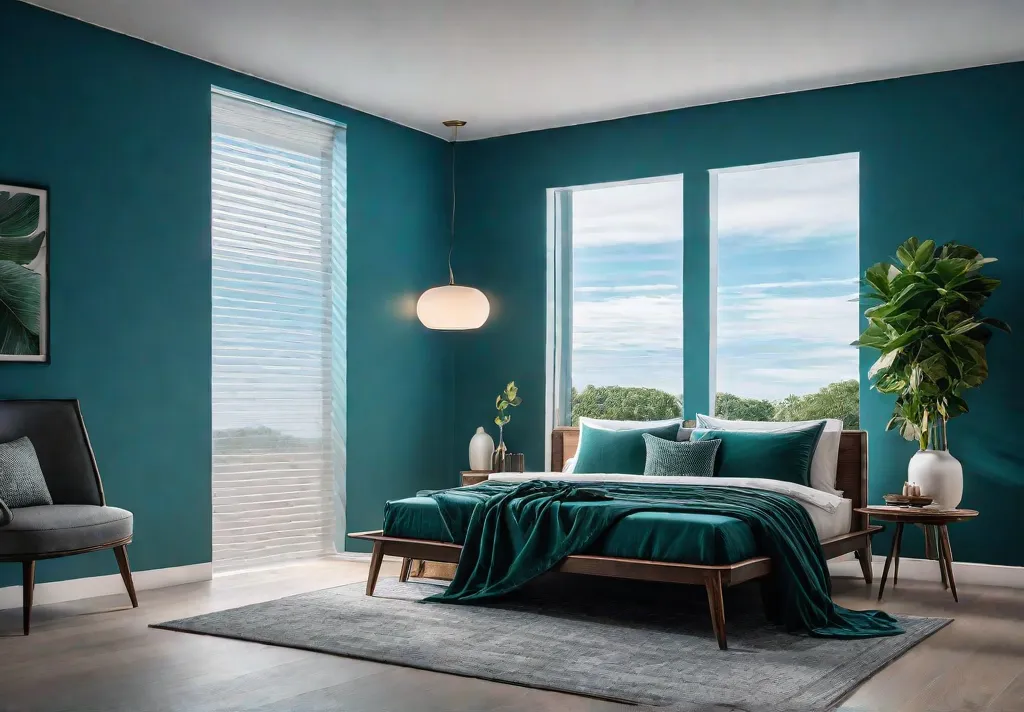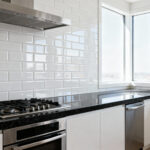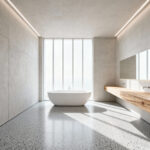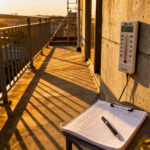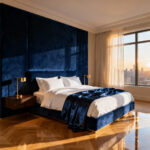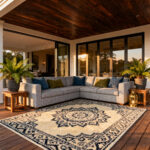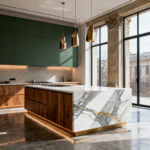Do you ever find yourself tossing and turning, unable to drift off into a blissful slumber? Or perhaps you wake up feeling groggy and unrested, despite spending hours in bed. If so, you’re not alone. The quest for a good night’s sleep is a universal pursuit, and the key may lie in the colors that surround us.

In today’s fast-paced world, our bedrooms have become sanctuaries – havens where we can escape the stresses of daily life and recharge our batteries. But creating a truly restorative sleep environment goes beyond just aesthetics; it’s a delicate art of combining science and design. As a passionate home decorator and design blogger, I’ve spent countless hours studying the intricate relationship between color and sleep, and I’m thrilled to share my insights with you.
Understanding Sleep Hygiene and Chronotypes
Sleep hygiene is a set of practices and habits that promote consistent, high-quality sleep. It’s a crucial aspect of overall well-being, as consistently poor sleep can increase the risk of serious health problems like obesity, cardiovascular disease, and diabetes. But did you know that your sleep needs might differ based on your chronotype?

What is Sleep Hygiene?
At its core, sleep hygiene is about creating an environment and routine that supports your body’s natural sleep-wake cycle. This includes maintaining a consistent sleep schedule, establishing a relaxing bedtime routine, and optimizing your sleep environment (more on that later!).
Some basic sleep hygiene practices include:
- Going to bed and waking up at the same time every day, even on weekends
- Creating a cool, dark, and quiet sleep environment
- Avoiding screens and stimulating activities before bedtime
- Establishing a calming pre-bed routine, like taking a warm bath or practicing light stretches
Decoding Your Chronotype
We’re all familiar with the terms “morning lark” and “night owl,” but did you know these refer to your chronotype – your body’s natural inclination toward specific sleep-wake patterns? Your chronotype is influenced by genetics and can even change slightly with age.
For example, morning larks tend to wake up early and feel most energetic in the morning hours, while night owls are more productive in the evenings and prefer to sleep in later. There are also intermediate chronotypes that fall somewhere in between.

Understanding your chronotype can help you tailor your sleep hygiene practices for optimal rest. For instance, a night owl might benefit from exposure to bright light in the evening to delay their body’s sleep signal, while a morning lark could use light exposure in the morning to help them wake up.
So, take some time to observe your natural energy patterns and preferred working hours – it could be the key to unlocking your best sleep yet!
Are you a morning lark, a night owl, or somewhere in between? Share your chronotype in the comments below!
While prioritizing sleep hygiene is crucial for everyone, recognizing your unique chronotype can guide you in customizing those practices – and your bedroom environment – for truly restorative slumber.
Speaking of which, in the next section, we’ll dive into the fascinating psychology of color and how it can influence your sleep quality. Stay tuned!
The Psychology of Color and Sleep
Colors have a profound impact on our emotions, physiology, and even our sleep patterns. The hues that surround us can evoke feelings of calm or energy, influencing our hormones and nervous system in subtle yet significant ways.

Colors that Promote Relaxation
When it comes to creating a sleep-friendly environment, cool and muted tones are your allies. Serene blues, tranquil greens, and soft lavenders have a calming effect on the mind and body, promoting a sense of tranquility that can help you unwind and drift off to sleep more easily.
These colors are known to lower blood pressure, heart rate, and respiration, all of which are essential for achieving a relaxed state conducive to quality sleep. Studies have shown that exposure to blue light before bedtime can suppress the production of melatonin, the hormone responsible for regulating our sleep-wake cycle.
Colors to Avoid in the Bedroom
On the other hand, vibrant and warm colors like bright reds, stimulating yellows, and bold oranges can have the opposite effect, increasing alertness and potentially disrupting your sleep patterns. These hues are associated with energy, excitement, and even appetite stimulation – all of which can interfere with your ability to fall and stay asleep.

Cultural differences can also play a role in how colors are perceived and their impact on sleep. For example, some cultures associate certain colors with specific emotions or meanings that may influence their sleep environment preferences.
The intensity or saturation of a color can also influence its effect on sleep. Deeper, richer tones tend to be more stimulating, while softer, muted shades are more calming and conducive to rest.
Practical Tips
- Incorporate cool, calming colors like blues, greens, and lavender into your bedroom decor for a serene and sleep-friendly atmosphere.
- Avoid bright, warm colors like reds, yellows, and oranges, which can be overstimulating and disruptive to sleep.
- Consider the cultural significance of colors and how they may impact your perception of a sleep environment.
- Opt for muted, softer shades over bold, intense hues for a more relaxing ambiance.
By understanding the psychology of color and its impact on sleep, you can create a bedroom oasis that promotes restful nights and rejuvenating slumbers.
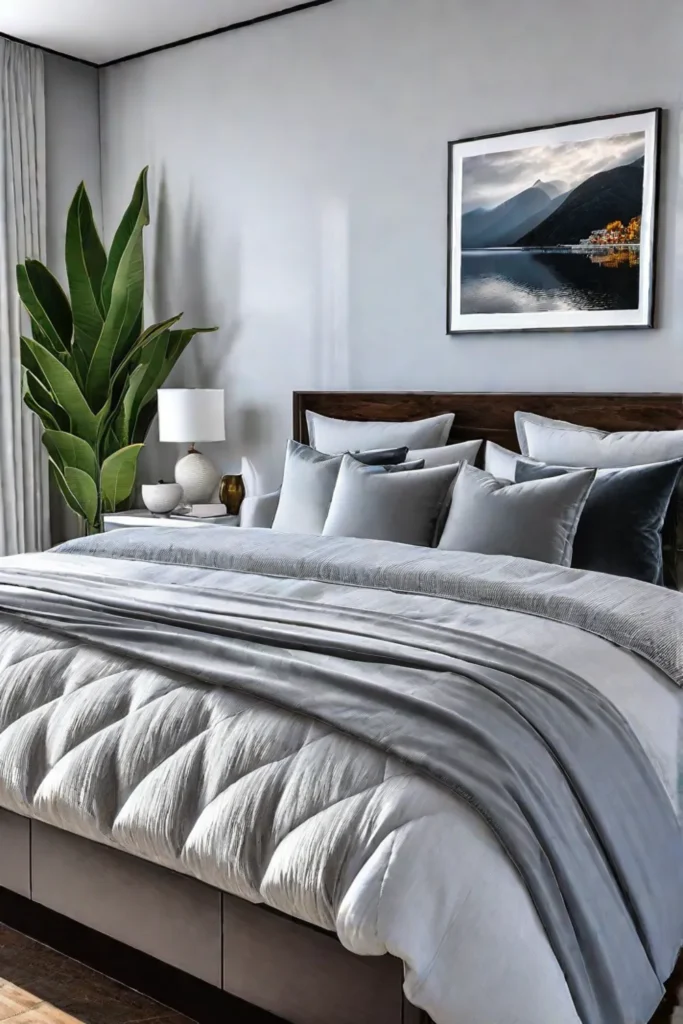
Now that we’ve explored the science behind color and sleep, let’s dive into the art of designing a color palette that will transform your bedroom into a true sleep sanctuary. In the next section, we’ll provide practical tips and inspiration for creating a harmonious and sleep-friendly color scheme tailored to your personal style and sleep preferences.
Designing Your Sleep-Enhancing Color Palette
When it comes to creating a bedroom oasis that promotes restful slumber, color plays a crucial role. As a Portland-based home decorator, I’ve seen firsthand how the right color palette can transform a space into a sleep sanctuary.
Creating a Cohesive Color Scheme
The key to designing a sleep-enhancing color scheme is to start with a calming base color and build from there. Cool tones like soft blues, greens, and grays are often recommended for their soothing qualities. However, I believe that personal preference should be the driving force behind your color choices. If warm, earthy tones like terracotta or sage green make you feel more relaxed, embrace them!

One of my favorite approaches is to use the 60-30-10 rule: 60% dominant color, 30% secondary color, and 10% accent color. This creates a harmonious balance while allowing for pops of personality through accents.
Incorporating Color Through Accents and Decor
Once you’ve selected your foundational colors, it’s time to have fun with accents and decor. This is where you can introduce texture and depth to your color scheme. For example, pair a cool blue wall color with crisp white linens and natural wood accents for a serene and airy feel.
If you prefer a cozier vibe, consider warm neutrals like taupe or sandy beige for your walls, and introduce soft lavender through throw pillows and a cozy armchair. The key is to create a cohesive palette that feels inviting and relaxing to you.
Don’t be afraid to experiment with different color combinations and textures until you find the perfect blend that resonates with your personal style and sleep preferences. Remember, creating a sleep sanctuary is all about curating a space that helps you unwind and recharge.
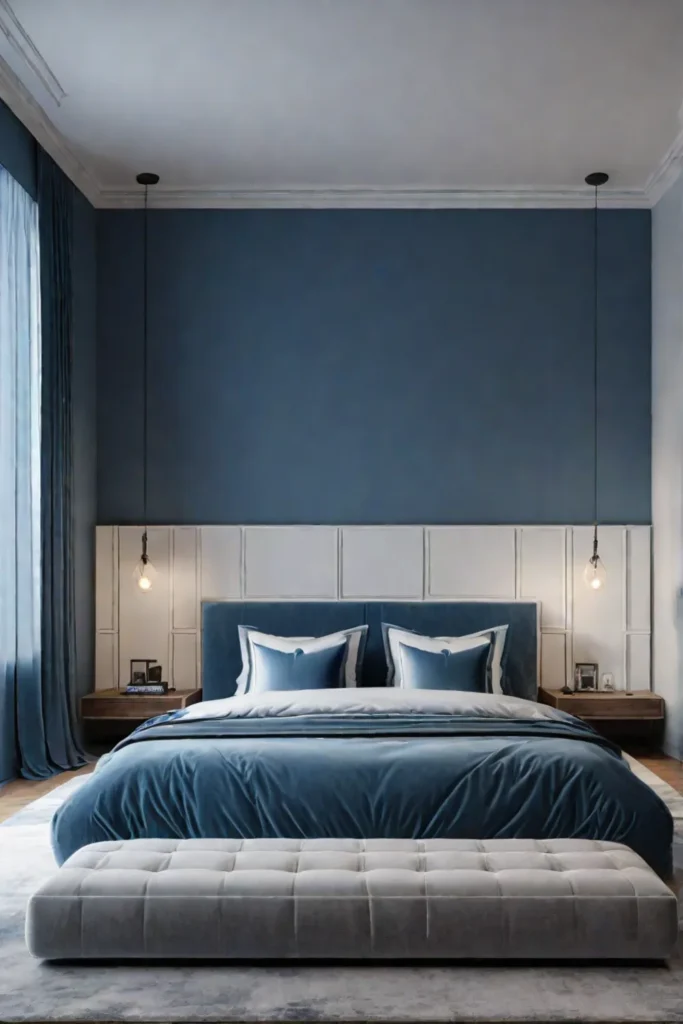
Whether you prefer a minimalist approach or a more eclectic style, the right color palette can work wonders in promoting a restful night’s sleep. And who knows, you might just find yourself looking forward to bedtime in your newly designed sleep oasis!
Next up, we’ll explore how to optimize your sleep environment beyond color, with tips on lighting, temperature, and more. Stay tuned for “Beyond Color: Optimizing Your Sleep Environment.”
Beyond Color: Optimizing Your Sleep Environment
While color plays a crucial role in creating a serene sleep sanctuary, other elements can significantly impact the quality of your sleep. Let’s explore the power of lighting and other sensory factors that can transform your bedroom into a true oasis of rest.

The Power of Lighting
Lighting design is often overlooked, but it’s a game-changer when it comes to regulating your body’s internal clock. Here are some tips to harness the power of light:
- Embrace natural light during the day by keeping your curtains open. Exposure to daylight helps align your circadian rhythm, making it easier to fall asleep at night.
- As evening approaches, dim the lights and opt for soft, warm-toned bulbs or lamps. This signals to your brain that it’s time to wind down and prepare for sleep.
- Invest in blackout curtains or an eye mask to block out any unwanted light sources that could disrupt your sleep.
Beyond the Palette: Other Sensory Elements
Your sleep environment should engage all your senses, creating a harmonious and calming ambiance. Here are some tips to consider:
- Temperature control is key. Aim for a slightly cool room, around 65°F (18°C), as this can promote deeper, more restful sleep.
- Choose bedding materials that regulate body heat and wick away moisture, such as breathable cotton or linen.
- Incorporate soothing scents like lavender or chamomile through essential oil diffusers or linen sprays. These can have a calming effect and enhance relaxation.
- Minimize noise pollution by using earplugs or a white noise machine to create a peaceful auditory environment.
- Declutter and organize your bedroom to create a visually serene space that promotes tranquility.
By optimizing these sensory elements, you’ll create a sleep sanctuary that not only looks beautiful but also feels utterly rejuvenating.

While creating a sleep-conducive environment is essential, it’s also important to consider your unique sleep patterns and preferences. In the next section, we’ll explore how to tailor your sleep sanctuary to your chronotype, ensuring a truly personalized oasis of rest.
Tailoring Your Sleep Sanctuary to Your Chronotype
We all have our unique internal clocks that govern our sleep-wake patterns. Some of us are morning larks, naturally energized at the crack of dawn, while others are night owls, hitting their stride as the sun goes down. Understanding your chronotype – your body’s natural inclination towards certain sleep-wake cycles – can be a game-changer when it comes to creating the perfect sleep sanctuary.
Morning Larks: Embracing the Light
If you’re a morning person, chances are you thrive in a light and airy environment. Consider incorporating soft, warm hues like pale yellows or gentle greens into your bedroom decor. These uplifting tones can complement your natural morning energy, making it easier to wake up refreshed and ready to take on the day.
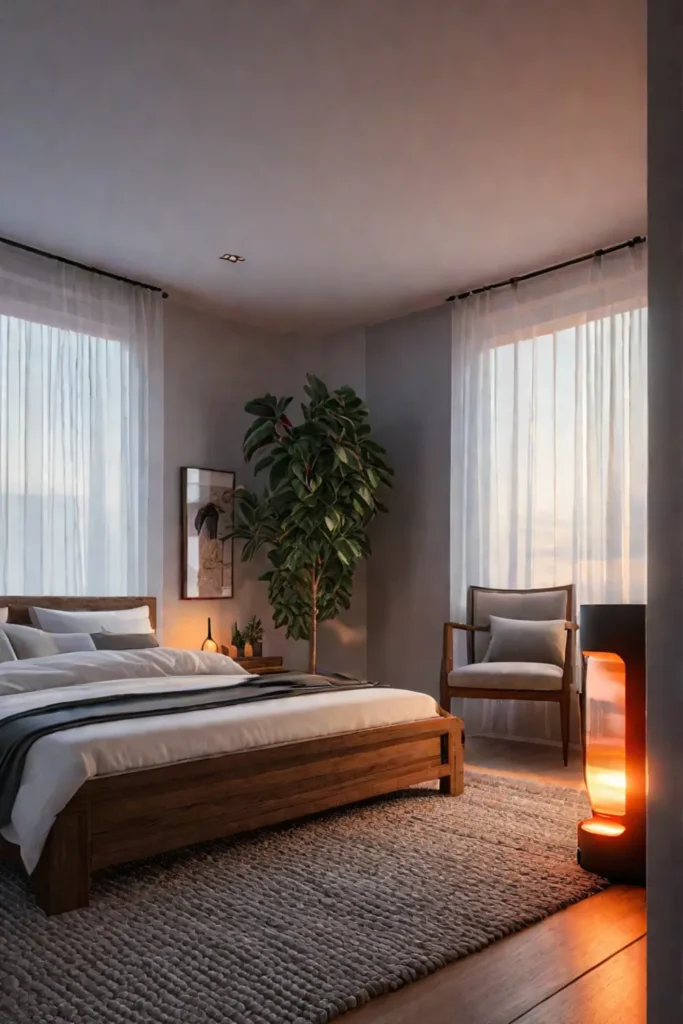
Embrace natural light by strategically placing sheer curtains or installing skylights. This not only enhances the bright and breezy ambiance but also helps regulate your body’s circadian rhythms, allowing you to wake up more naturally in sync with the rising sun.
Night Owls: Creating a Cozy Retreat
For those of us who come alive after sunset, a cozy and cocoon-like atmosphere can be the key to a restful night’s sleep. Deep, rich hues like navy blues or charcoal grays can create a sense of calm and tranquility, perfect for winding down after a long day.
Consider investing in blackout curtains or window treatments that effectively block out external light sources. This can help mimic the natural darkness that night owls crave, making it easier to fall asleep and stay asleep throughout the night.
Additionally, incorporating warm lighting with dimmers can be a game-changer for night owls. Gradually dimming the lights as bedtime approaches can signal to your body that it’s time to wind down, allowing for a smoother transition into slumber.

Respecting your chronotype and tailoring your sleep environment accordingly can have a profound impact on your overall well-being. By working with your natural rhythms, you’re more likely to experience deeper, more restorative sleep, which can lead to increased energy, productivity, and overall happiness.
So, whether you’re a morning lark or a night owl, embrace your unique sleep style and create a sleep sanctuary that truly resonates with your body’s internal clock.
While understanding your chronotype is crucial, there are other factors to consider when crafting the perfect sleep oasis. In the next section, we’ll explore how to incorporate soothing color palettes and textures to create an environment that promotes relaxation and rejuvenation, no matter your sleep style.
Wrapping Up
As we’ve explored, the path to restful slumber is a delicate balance of science and art, and color plays a pivotal role in creating a sleep sanctuary that resonates with your unique needs and preferences. Whether you’re a morning lark or a night owl, embracing the power of color can transform your bedroom into a true oasis of rejuvenation.
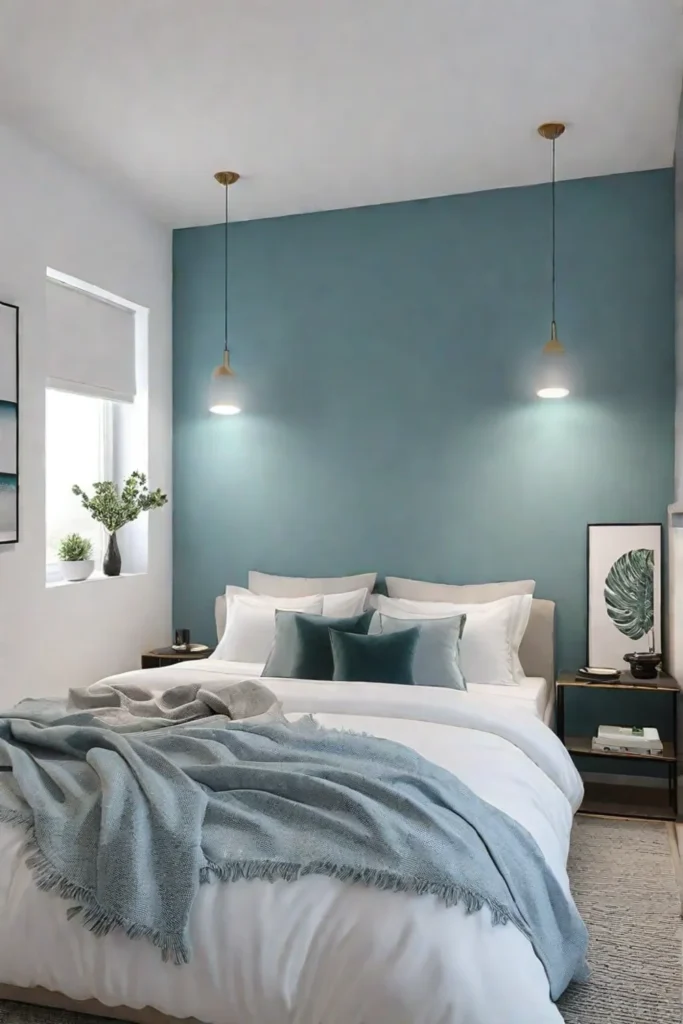
But remember, designing your perfect sleep environment is a deeply personal journey. It’s about understanding your body’s natural rhythms, experimenting with different color palettes and sensory elements, and ultimately creating a space that feels like a sanctuary – a place where you can truly unwind and wake up feeling refreshed and energized.
So, go forth and embrace the art of sleep-enhancing design. Experiment with different color combinations, play with textures and lighting and let your creativity flow. After all, a good night’s sleep is not just a luxury; it’s an investment in your overall well-being. And what could be more beautiful than that?
